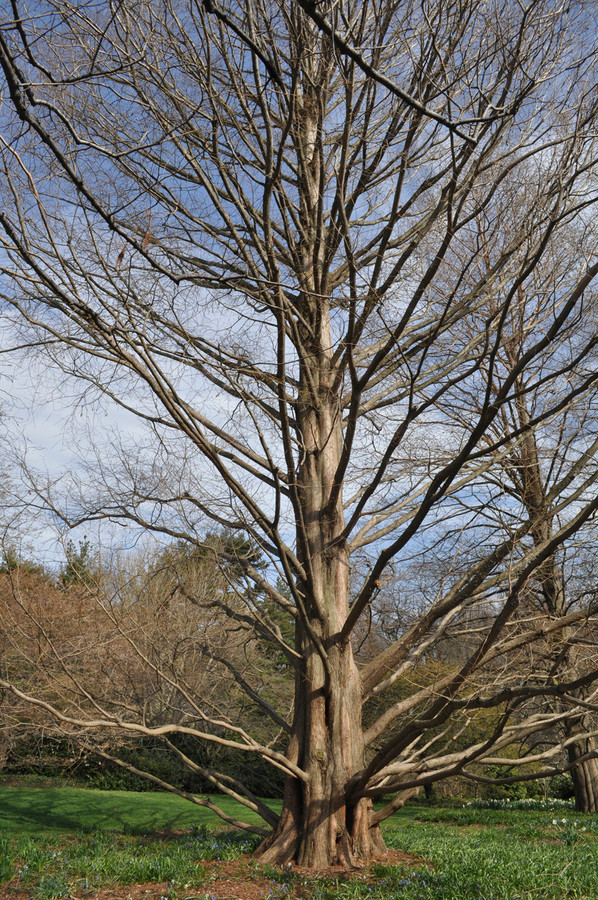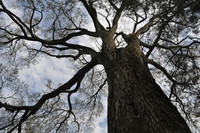Wave Hill’s trees just as beautiful when bare
Some say maples, cypresses and beeches all reach the peak of their glory in the fall, when their foliage adds shades of dark red, bright orange or deep green to the skyline.
But on a recent tour of Wave Hill, a group of experts pointed out the subtle pleasures of looking at the grounds’ wide range of trees before their leaves even appear.
“I love the contrast between the massive, powerful trunk and lacey branches,” seasoned spokeswoman Martha Gellens said beneath a looming, roughly 100-year-old American elm.
It is “stately and graceful, the way its trunk goes up very clear, way above other trees and then spreads out like an umbrella above them,” remarked Louis Bauer, director of horticulture at Wave Hill, which is hosting a number of events to mark Arbor Day later this month.
Across a footpath, there was a lacebark pine tree with eye-catching speckled bark. The species originally comes from China.
Ms. Gellens pointed out while most public gardens arrange their trees in uniform groups, visitors can find a diverse mix of plants within close proximity to one another at Wave Hill.
“Détente — right here,” Laurel Rimmer, assistant director of public programs, joked in front of the American and Chinese trees.
Mr. Bauer pointed out that since Dutch elm disease destroyed many American elms in the 1930s, Wave Hill takes extra pains to care for its grandfatherly specimen.
He noted that in recent years, climate change and increasing temperatures have begun to threaten some trees that are not native to New York.
“I think that most people would say that climate change is affecting some trees like the sugar maple because this is sort of the southern end of their range,” Mr. Bauer said. “They [come from] the colder parts of their country.”
On the rare occasions that Wave Hill loses a tree — sometimes just due to old age — the institution breaks the news to guests months before removing the specimen.
“People tend to have very strong feelings about trees — maybe in general, but here especially. If a tree has to come down, it evokes a lot of feelings,” said Ms. Gellens, explaining that regular visitors grow used to seeing beloved trees over the years.
Unseasonably cold temperatures so far this spring have given magnolia trees in particular a hard time, as evidenced by their desiccated leaves. But near Wave Hill’s Glyndor Gallery, where the center exhibits art that often has a conservation theme, a copper beech seemed to be doing fine.
The tree, which gets its name from the color it turns in the fall, was still grayish-white on Monday.
“Look at the roots. It’s like big worms coming up. It’s a very muscular-looking trunk and fascinating to children,” said Ms. Gellens. “They like to get under it and look right up into it.”
Many of the trees that are still bare at Wave Hill will have gained foliage by Arbor Day, which falls on Friday, April 29. The center has scheduled a wide range of activities for that week. There will be guided tours focusing on trees, art-making and science workshops, lessons on cooking with conifers and more.
“Our take on Arbor Day may not be exactly what the founders intended, which was probably more about planting trees,” said Mr. Bauer. “We’re really celebrating ones that have been here for 100, 200 years. So we have our own kind of focus.”
Visit www.wavehill.org to see a full listing of Arbor Week events at Wave Hill, located at 675 W. 252nd St.











